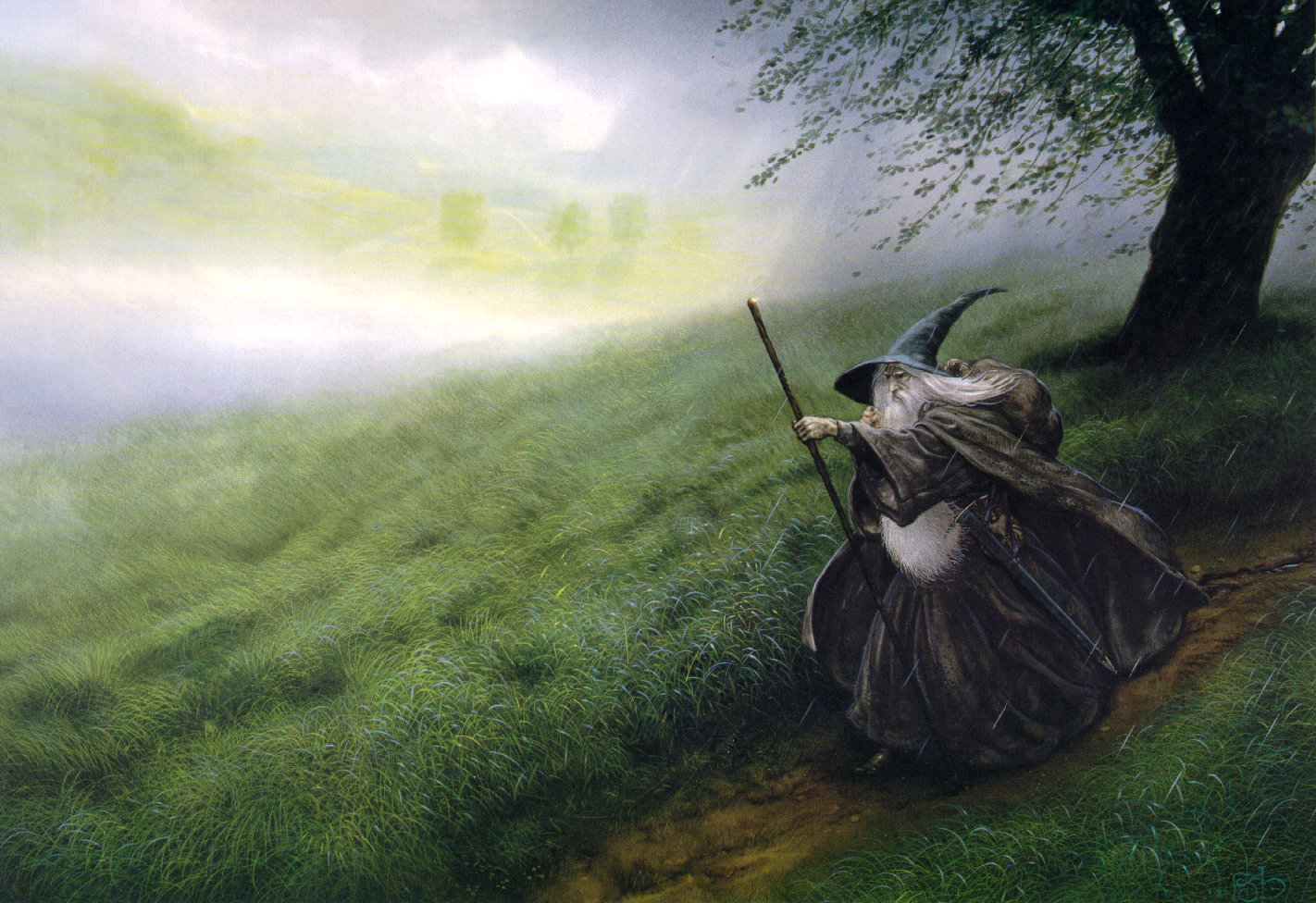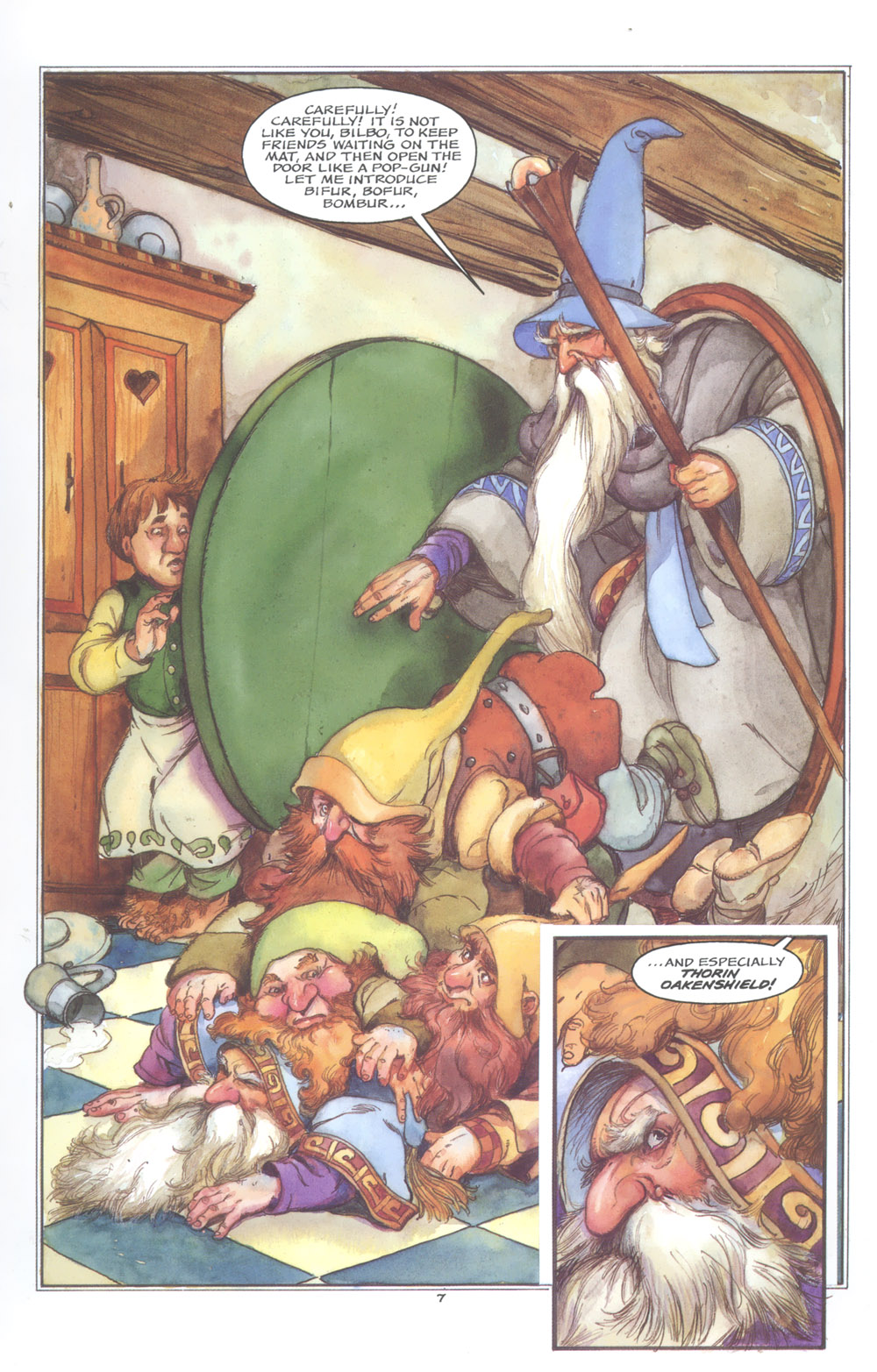
Wednesday, March 18, 2009
Monday, March 9, 2009
The Hobbit... the game?!
The Hobbit in Games & Entertainment
The Hobbit has been developed into various entertainment media.
In board games, the strategy game "Battle of the Five Armies" was released as a Risk-style board game where players took on one of the five armies in an attempt to conquer the other four. The game was released in the 1970s and proved unpopular for its unclear rules.
Next was "The Lonely Mountain" in 1985 which was unique in its use of a hex grid for spaces to move on (as opposed to a traditional "trail" or "grid" layout), its use of both a dice and card game (similar to Monopoly) and a guessing game (players searched for the treasure card among the other cards that included Smaug as an outcome).
The "Middle Earth Role-Playing Game" is a dice & chart combination game based on both The Hobbit and the trilogy Lord of the Rings. This started in 1984 and has seen various incarnations since.
In video games, The Hobbit was first published on PC by Beam Software in 1982.
Then again, in 2003, it was released on PC, Sony PlayStation 2, Microsoft XBox, and the Nintendo GameCube. It was unique once again in that it was a combination of a Platformer and an Action RPG.
Don't forget to post your ideas!
Upon Request... Here are some facts about Thorin!

Thorin Oakenshield
- Thorin is referred to several times in the novel as "King Under the Mountain."
- The "King in the Mountain" is a motif of various fairy tales. This variation with "Under" is most often found in Celtic tradition.
- Tolkien uses "King Under the Mountain" to refer to the Dwarven king throned in the Lonely Mountain of the region of Erebor.
- Thorin is of the bloodline of Durin I, also known as Deathless Durin, because he grew to be the oldest recorded person of the Dwarfs. Durin's tribe is known as the Longbeards and they are royal bloodline who have always taken the title "King Under the Mountain." They are also sometimes referred to as Durin's folk because he was their first king.
- Thorin is most often introduced as "Thorin Oakenshield, son of Thrain, son of Thror." This line of ancestry directly relates him all the way back to Durin.
- Thorin enjoys both singing and playing the harp. One of his songs is about the treasure of the Lonely Mountain.
- Thorin is a "warrior king." He is a brave warrior and a strong combatant. He proves to be very smart in battle, cunning and capable. However, he not a charismatic, eloquently inspiring, or very strategic when it comes to actual leadership. In The Hobbit, he more often refers to Gandalf or even Bilbo for some sort of leadership. His decision to hole up in the Lonely Mountain against Bard and the people of Lake-Town soon proves not only stubborn, but fatal.
- Thorin's strong military sense but lack of leadership skill has been likened to president Andrew Jackson, a great military general.
- Thorin's last words: "If more of us valued food and cheer and song above hoarded gold, it would be a merrier world. But, sad or meery, I must leave it now. Farewell." Important as he was addressing Bilbo, who exhibited these characteristics and Thorin did not realize this importance until the very end of his life.
- Thorin was born in 2746 and was driven from Erebor by Smaug the Dragon in 2770.
- In 2799, Thorin was 53 and was in the ranks of the Dwarf army during the War of Dwarves and Orcs. In a battle at Dimrill Dale (or, more often, called Nanduhirion), Thorin charged into battle and his shield was destroyed. With his ax, he hacked off a huge branch of an oak tree and used it as his protection. This is how he gained the name "Oakenshield."
Monday, February 23, 2009
Popular Images
Bilbo Baggins



Bard
http://anke.edoras-art.de/
The Goblins

Wargs

Eagles

Beorn
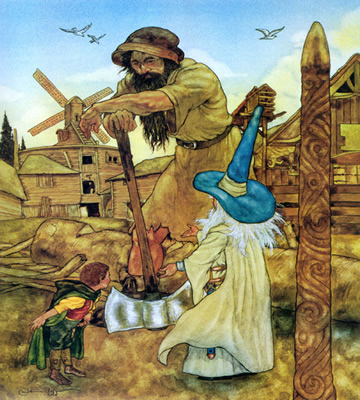
Elrond (the Elf)

And Gollum (or Smeagol)
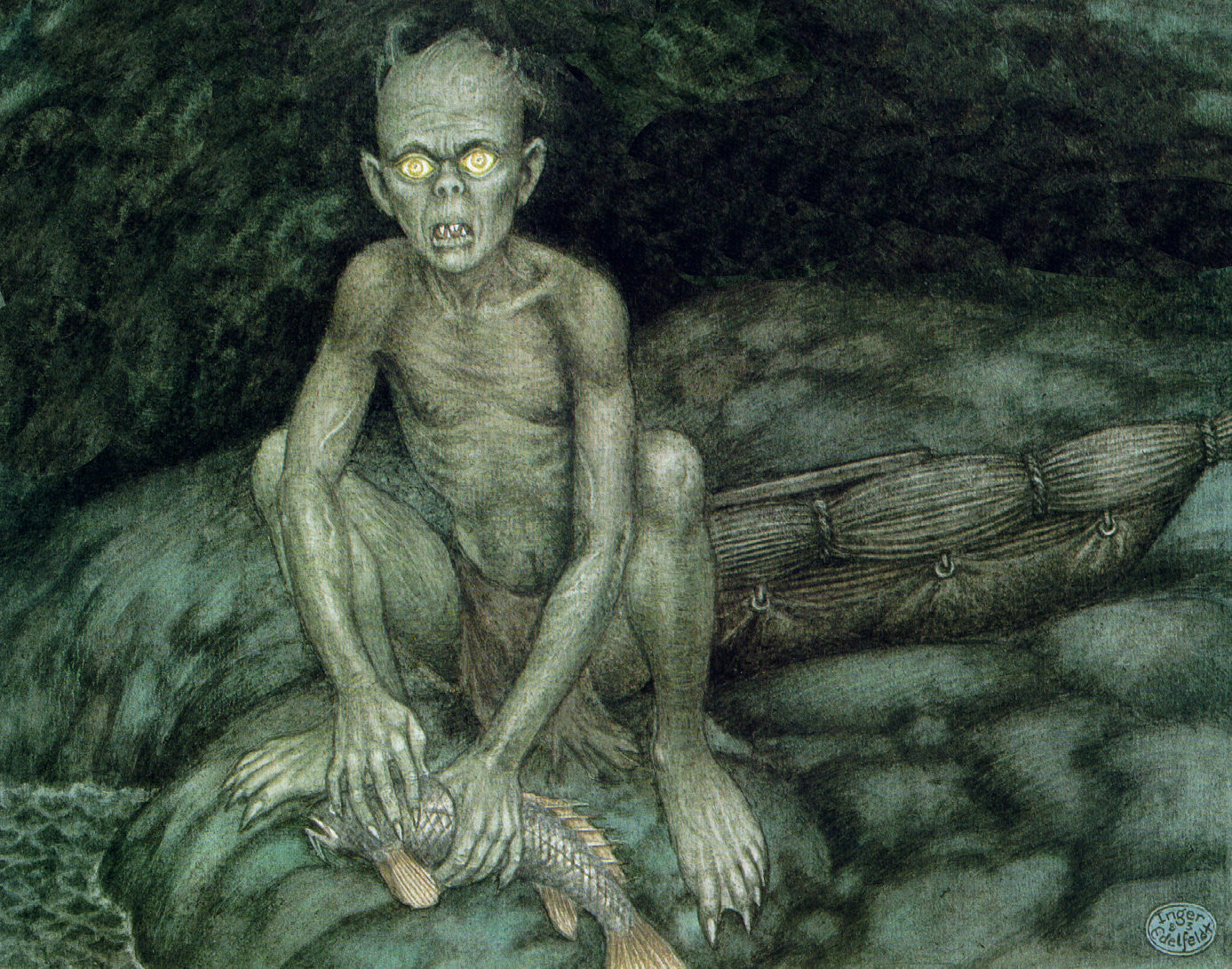

The Giant Spiders (Shelob)
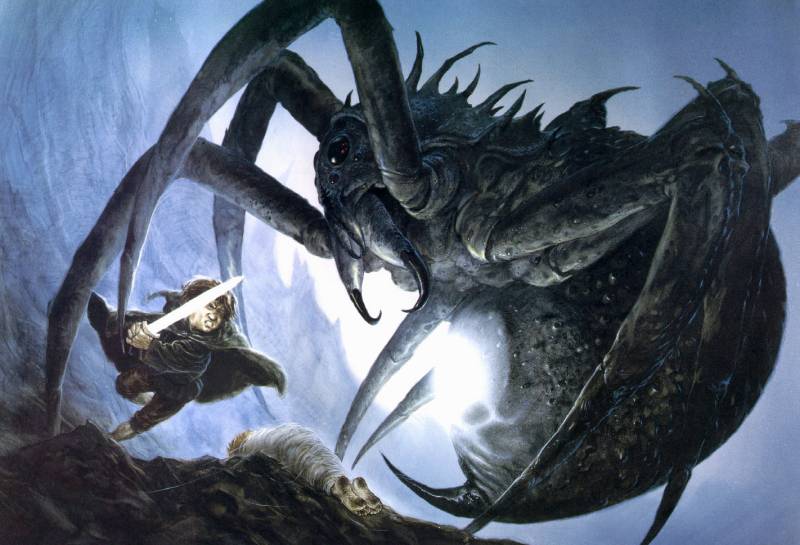
Other Places to check out images for as well:
The Shire (Hobbiton)

Rivendell

Lake-Town
http://www.cedmagic.com/fe
Erebor (The Lonely Mountain)
http://www.geocities.com/p
Mirkwood Forest

The Misty Mountains
Tuesday, February 10, 2009
My first visit to the cast of The Hobbit!
Not only did we discuss the story of the novel and the plot of the production we are working on, but we also talked about J.R.R. Tolkien himself and how The Hobbit came to be! It was very exciting to see how enthusiastic everyone was in helping tell the story of little Bilbo Baggins. Especially so early on in the rehearsal process, I know that such positive energy will be a major key in telling this exciting tale... eventually for an audience!
Near the end of our discussion, we talked about some major themes in The Hobbit. We decided that a theme is an idea or message that we find in the text of the book and/or play; the theme can be a lesson that the author wants to teach, or perhaps just something for a spectator (reader or audience member) to walk away thinking about. There can be many themes in a story -- we certainly found a few! -- and we can assume Tolkien thought about these themes as he wrote The Hobbit.
What were some themes we discussed? Can you remember!?
Well...
- Size doesn't matter! It doesn't matter how small Bilbo Baggins is compared to his friends, he achieves such amazing things! Often times, he is a hero in our story, and his friends (and maybe even enemies) learn to eventually respect him for his heroicism and huge heart! To directly apply this theme to theatre, we recalled a famous saying, "There are no small parts, only small actors!" This quote accurately reminds us that each and every role in theatre is very important! Each character is integral (very important!) to the plot. Just like Bilbo, no matter how small you feel... you are capable of enormous things!
- You can't put a price on friendship. We know that Bilbo sometimes has a difficult time earning respect from other characters, particularly the Dwarfs at first. Nevertheless, Bilbo stays true to himself (brave, courageous, kind) and treats other with the respect he feels he deserves. Eventually, Bilbo receives respect and gains valuable friends throughout his journey. At the very end of our story, Tolkien describes how important and valuable friendship is, as Bilbo and Thorin become friends. Bilbo even rejects treasure because it is no compensation for the loss of his friend.
Hopefully I'll see you all soon! Your read through sounded great! I can't wait to see even more when I visit next time!
The (Novel) Plot
The group travel into the wild, where Gandalf saves the company from trolls and leads them to Rivendell. While there, Elrond reveals more secrets from the map. Passing over the Misty Mountains, they are caught by goblins and driven deep underground. Although Gandalf rescues them, Bilbo gets separated from the others as they flee the goblin tunnels. Lost and disoriented, he stumbles across a mysterious ring and then encounters Gollum, who engages him in a game of riddles with deadly stakes. With the help of the ring, which confers invisibility, Bilbo escapes and rejoins the dwarfs, raising his reputation with them. The goblins and Wargs give chase and the company are saved by eagles before resting in the house of Beorn, the skin-changer.
The company enter the black forest of Mirkwood without Gandalf. In Mirkwood, Bilbo first saves the dwarfs from Giant Spiders and then from the dungeons of the Wood-elves. Nearing the Lonely Mountain, the travelers are welcomed by the human inhabitants of Lake-town, who hope the dwarfs will fulfill prophecies of Smaug's demise. The expedition travel to the Mountain and find the secret door; Bilbo scouts the dragon's lair, stealing a great cup and learning of a weakness in Smaug's armor. The enraged dragon, deducing that Lake-town has aided the intruder, sets out to destroy the town. A noble thrush who overheard Bilbo's report of Smaug's vulnerability reports it to Bard the Bowman, who slays the Dragon.
When the dwarfs take possession of the mountain, Bilbo finds the Arkenstone, an heirloom of Thorin's dynasty, and steals it. The Wood-elves and Lake-men besiege the Mountain and request compensation for their aid, reparations for Lake-town's destruction, and settlement of old claims on the treasure. Thorin refuses and, having summoned his kin from the north, reinforces his position. Bilbo tries to ransom the Arkenstone to head off a war, but Thorin is intransigent. He banishes Bilbo, and battle seems inevitable.
Gandalf reappears to warn all of an approaching army of goblins and Wargs. The dwarfs, men, and elves band together, but only with the timely arrival of the eagles and Beorn do they win the climactic Battle of Five Armies. Thorin, mortally wounded, lives long enough to part from Bilbo as a friend. The treasure is divided fairly, but, having no need or desire for it, Bilbo refuses most of his contracted share. Nevertheless, he returns home wealthy.
The History of the Hobbit
The History of The Hobbit is broken into two volumes:
Mr. Baggins covers approximately the first half of the published novel and Return to Bag-End covers the second half.
Despite the complicated history of these volumes, the text itself is surprisingly readable (far more so, I believe, than Christopher Tolkien’s History of ‘The Lord of the Rings’) mainly because of its overall organization.
The History of ‘The Lord of the Rings’ is very fragmentary and disorganized. This is not a slight against Christopher Tolkien’s editorial abilities, but a reference to the complication of the early Lord of the Rings manuscripts.
The History of The Hobbit is much more linear in structure, meaning that it can be read, even in its early drafts, as a “story”. The early Lord of the Rings manuscripts often stop mid-sentence, backtrack, and create a general tangle.
In spite of later changes to the narrative, The History of The Hobbit holds together as a piece, and the editorial commentary occurs at the end of chapters, rather than breaking in amongst the text. This gives the piece an excellent flow and makes for far less difficult reading.
The editorial detail is highly detailed and fascinating. Rateliff’s knowledge of Tolkien’s other writings is impeccable, as is his research on the various references and sources for the book.
The books feature a very detailed step-by-step examination of Tolkien’s sources and the many scholarly and mythological texts that inspired parts of the storyline.
This is a readable and highly-suggested book for anyone interested in the history of The Hobbit, the creative process Tolkien used to write the story, and particularly how The Hobbit ties in with the rest of Tolkien’s “Legendarium”.
Click on either of the links below to read a more detailed review of each volume of The History of The Hobbit or an exclusive interview with the author.
Credit: http://www.tolkien-online.com/history-of-the-hobbit.html

